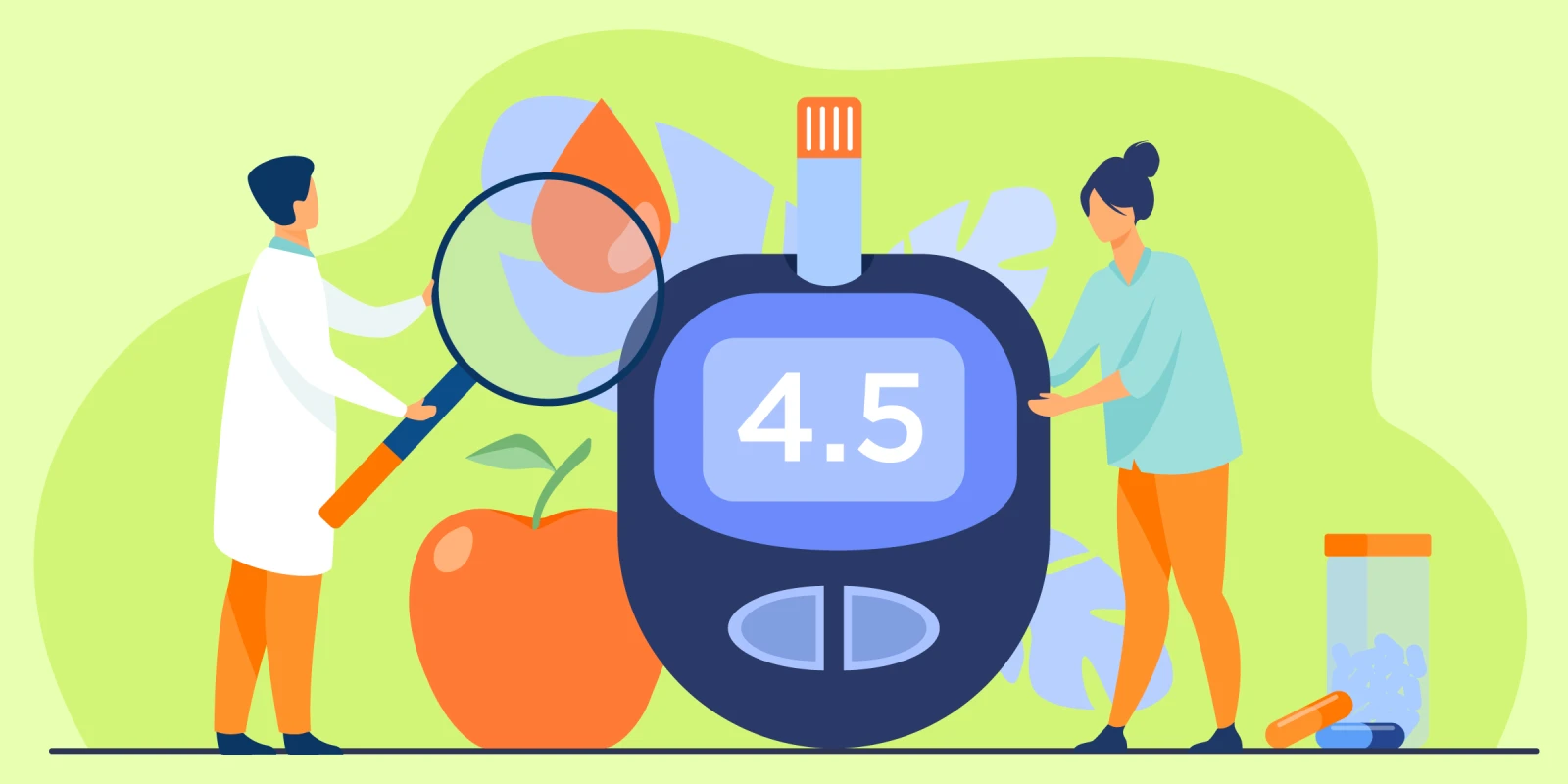One of the highlights of the American Diabetes Association’s 81st Scientific Sessions was the presentation of the long-anticipated results of the Glycemic Reduction Approaches in Diabetes (GRADE) study. Begun in 2013, the GRADE study sought to understand the comparative effectiveness of four commonly used diabetes medications — glimepiride, sitagliptin, liraglutide, and insulin glargine — as the first add-on therapy after metformin. This study was designed to fill a critical gap in the literature since there is currently little evidence to guide add-on therapy in the absence of cardiovascular or renal comorbidities. In addition, the comparative effectiveness aspect of GRADE supplies important new data since novel medications are routinely compared to placebo rather than to existing therapies, and differences in study design and inclusion criteria limit comparisons between studies.
GRADE enrolled 5,047 individuals with Type 2 diabetes (T2D) of < 10 years duration (mean 4.2 years), on metformin monotherapy, with hemoglobin A1c (HbA1c) 6.8-8.5% (mean 7.5%). Mean age was 57.2 years, 36% of participants were women, and racial and ethnic diversity was prioritized (66% White, 20% Black, 3.6% Asian, 2.7% American Indian and Alaska Native, and 7.6% other/unknown race; 18% Hispanic ethnicity). The mean body mass index (BMI) was 34.3 kg/m2. Individuals with estimated glomerular filtration rate (eGFR) < 30 ml/min/1.73m2 and with any major cardiovascular event in the previous year were excluded, making this a low-risk cohort for cardiovascular events (only 6.5% of participants had a history of heart attack or stroke at baseline).
The primary outcome was time to occurrence of HbA1c ≥7%. The secondary outcome was time to occurrence of HbA1c > 7.5%; at this point, basal insulin (glargine) was initiated. Finally, a tertiary outcome was reached at the next occurrence of HbA1c > 7.5% after initiation of basal insulin. Individuals were followed for a minimum of four years and a mean of approximately five years.
The primary outcome occurred in approximately 71% of all participants and occurred most frequently in those assigned to sitagliptin, followed by those who took glimepiride, and lastly by those given either liraglutide or glargine. This represented approximately a six-month earlier progression among those assigned to sitagliptin than to liraglutide or glargine, with most of the separation between medications occurring within the first year after randomization. Heterogeneity of treatment effect was examined in numerous subgroups, including categories of age, biological sex, race/ethnicity, BMI, and baseline HbA1c; of these, heterogeneity was only seen by HbA1c, with greater differences between groups among those with higher HbA1c at baseline. The findings of the secondary and tertiary outcomes were similar to those of the primary outcome, with the exception that insulin glargine outperformed liraglutide for the secondary outcome.
Microvascular and macrovascular outcomes were also assessed throughout the trial. There was no observable difference in microvascular events, including the occurrence of moderately or severely increased albuminuria, eGFR < 60 mL/min/1.73m2, or neuropathy. Of note, rates of neuropathy, defined by Michigan Neuropathy Screening Instrument score > 2.54, were high, with 27% of individuals having neuropathy at baseline and approximately 70% experiencing neuropathy during follow-up.
Regarding macrovascular outcomes, approximately 10% of cardiovascular events remain to be adjudicated, so these findings should be interpreted as preliminary. Although numerically lower rates of three-point major adverse cardiovascular events (3p MACE), hospitalization for heart failure, and all-cause mortality were seen in those assigned to liraglutide, no statistically significant differences were observed. However, rates of any cardiovascular event, a composite outcome including elements such as unstable angina and revascularization, in addition to 3p MACE and mortality, were statistically different, with the lowest rate occurring in those assigned to liraglutide. This is striking given that GRADE recruited a low-risk cohort and was not powered for cardiovascular outcomes. Further, this raises the question of whether liraglutide and other glucagon-like peptide-1 receptor agonists (GLP1-RA) may have a role not only in secondary prevention of cardiovascular disease but also in primary prevention. Moreover, prior to GRADE, concerns based on observational data persisted regarding whether sulfonylureas or insulin itself resulted in an increased risk of cardiovascular events, although glimepiride was previously found to have comparable risk to linagliptin in the CAROLINA randomized trial. In GRADE, glimepiride and glargine had comparable rates of cardiovascular events to sitagliptin, which had previously been shown to have a neutral effect on macrovascular events in the TECOS trial, further supporting the cardiovascular safety of these two agents.
There was no difference in severe adverse events among treatment arms. Severe hypoglycemia occurred most frequently in those assigned to glimepiride, followed by glargine, and then by liraglutide and sitagliptin, both of which resulted in hypoglycemia in < 1% of participants. Indeed, severe hypoglycemia was strikingly low in all participants, occurring in 2.3% and 1.4% of those assigned to glimepiride and glargine, respectively. This may be due to relatively good baseline glycemic control, representing earlier or more mild diabetes, and more lenient glycemic goals compared to other studies (e.g., compared to ACCORD, where baseline HbA1c was 8.3%, and individuals were randomly assigned to target HbA1c 6.0% or 7.5%, with 16.2 and 5.1% experiencing hypoglycemia requiring assistance, respectively). Mean weight and occurrence of >10% weight gain were lowest in those assigned to liraglutide, while the occurrence of gastrointestinal side effects was highest.
GRADE has several important limitations. First, there were a number of protocol violations during the study, with approximately 13-20% of individuals discontinuing their assigned medication during the trial and 16-21% starting an off-protocol medication. Additional analyses (e.g., as-treated analyses) may help to understand these effects in the future. Additionally, due to the time at which GRADE was conceived and launched, sodium-glucose cotransporter-2 inhibitors (SGLT2i) were not included in the trial. Given the prominence of these medications in current guidelines and their role in preventing both cardiac and renal complications, the absence of comparative efficacy data regarding this medication class leaves an important opportunity for future research.
Overall, these findings confirm the role of liraglutide and other GLP1-RA as an excellent early option for the treatment of T2D, even in those without pre-existing cardiovascular disease. While sitagliptin, glimepiride, and glargine continue to have a place in the armamentarium of T2D treatments, with efficacy and safety profiles informed by this study, the field continues to move steadily towards a preference for medications with both glycemic benefit and cardiometabolic benefits including control of weight, blood pressure, and macrovascular risk.
The GRADE trial provides a wealth of information, both about the comparative effects of these medications and about the natural history of Type 2 diabetes itself, and forthcoming analyses from the study, including pharmacogenetic analyses, clinical clustering studies, and analyses of additional outcomes such as cognitive function, quality of life, and cost-effectiveness, warrant further excitement. We will continue learning from the GRADE trial for years in the future.
Dr. Sara Jane Cromer is an Assistant in Medicine in the Division of Endocrinology, Diabetes, and Metabolism at Massachusetts General Hospital and an Instructor at Harvard Medical School. Her research examines disparities in diabetes care, including racial/ethnic and socioeconomic differences in diabetes incidence, treatment choice, and response to treatment.
Dr. Cromer's spouse is an employee for a Johnson & Johnson subsidiary







